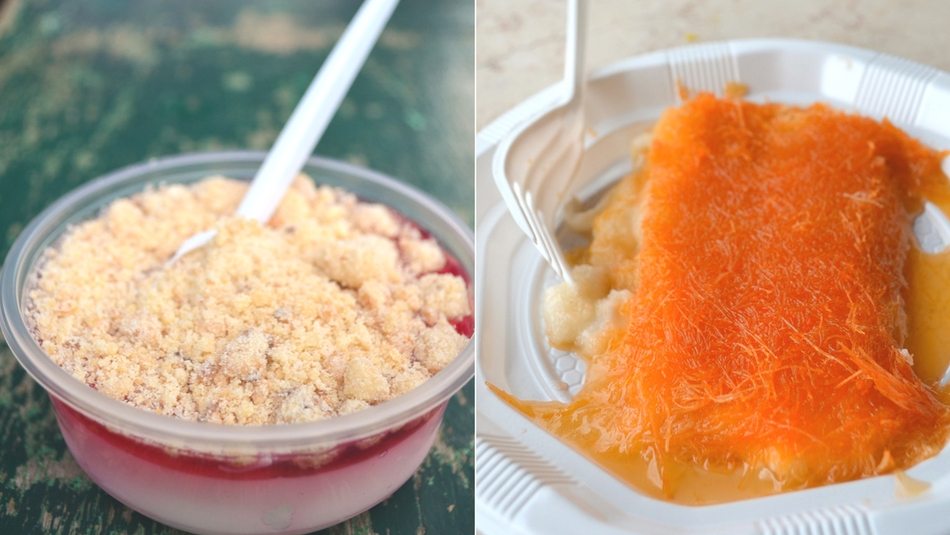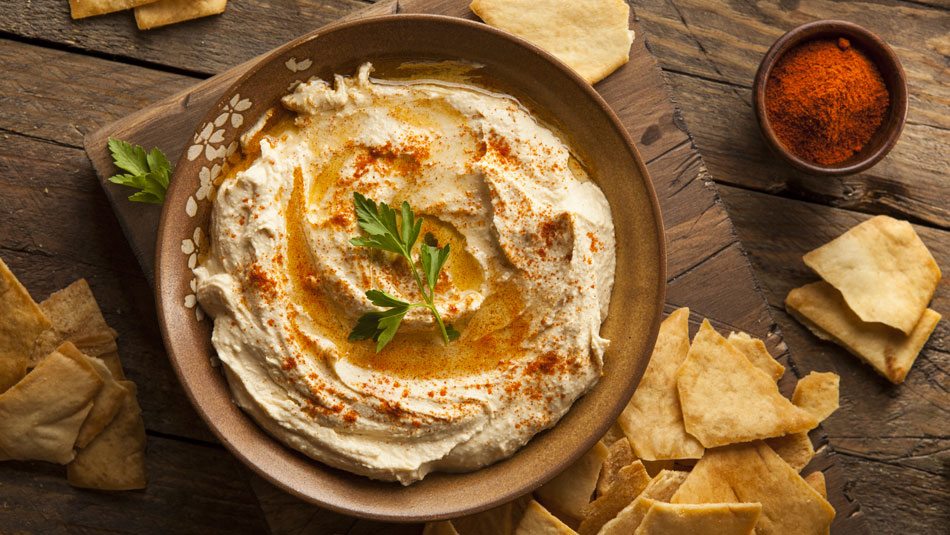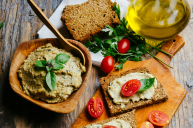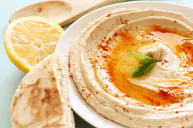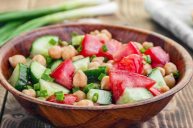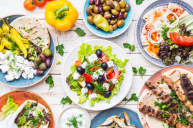Food is a way of life. Wherever you are in the world, be it Belarus or in a small town in Oklahoma, every place has their own food culture which tells the story of where they live. In New Orleans they have gumbo and beignets, up in Chicago they have deep dish pizza and we can't forget all of the different kinds of barbecue we have here in Texas.
Videos by Wide Open Country
When I first heard about the chance to spend ten days in Israel exploring the country and culture through the lense of food, I was instantly intrigued. Israel, which only became an independent nation in the 1940s, has a history that dates back for centuries. Its people work their hardest to preserve every bit of history and culture as they can-which is apparent in the food they eat.
Instead of going through an entire dissertation of the tour I decided that sharing with you some of my favorite treats and meals of the trip would be the perfect way to incorporate a bit of the culture into your everyday meals.
Some of My Favorite Dishes I Ate While In Israel
1. Hummus
Hummus, pronounced like "choo-moose" with a big throaty "choo" is the life blood of most Israeli citizens. They even joke about using it as a toothpaste because they eat so much of it.
Compared to American hummus, Israeli hummus is on another playing field completely. Each region has their own distinctive twist-whether it be smooth and creamy or with bits of chickpeas. Served by itself with pita or as a spread on a sandwich, hummus is a staple found in every Israeli home.
To prepare a batch of hummus, one must soak dried chickpeas (also called garbanzo beans) in water overnight. No canned beans here! Once the chickpeas are softened they are pureed together with sesame seed paste (tahini), olive oil, garlic, lemon juice and salt.
Traditionally a nice glug of olive oil is swirled on top but everything from fava beans to preserved lemons have taken the stage in the hummus world. And don't think that their is one single place in Israel that serves the best hummus-it's like New York and their pizza. Ask five New Yorkers the best pizza place in the city and you'll get five totally different answers.
2. Pita
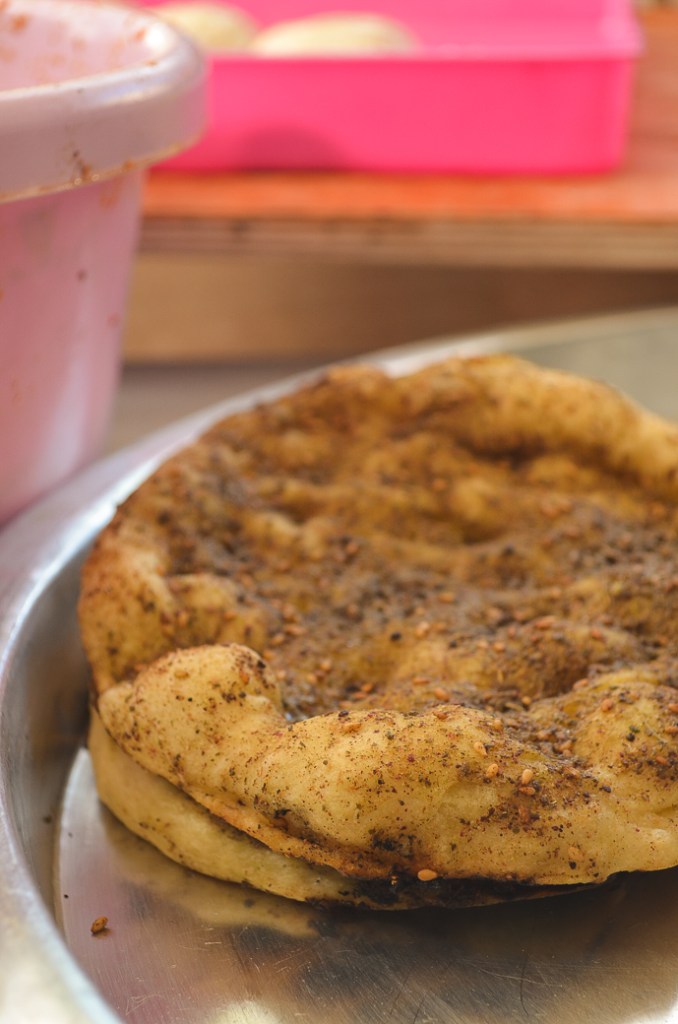
Lyndsay Burginger
Nothing goes better with a big bowl of hummus than freshly baked pita bread. Slightly leavened, this bread can be stuffed with kebab or eaten plain as an afternoon snack.
During the trip I was fortunate enough to be invited to a Druze house and learn the traditional way of preparing pita in a wood-fired oven. The Druze are ethnoreligious group who follows the teachings of Islam, Hinduism, Gnosticism and Neoplatonism.
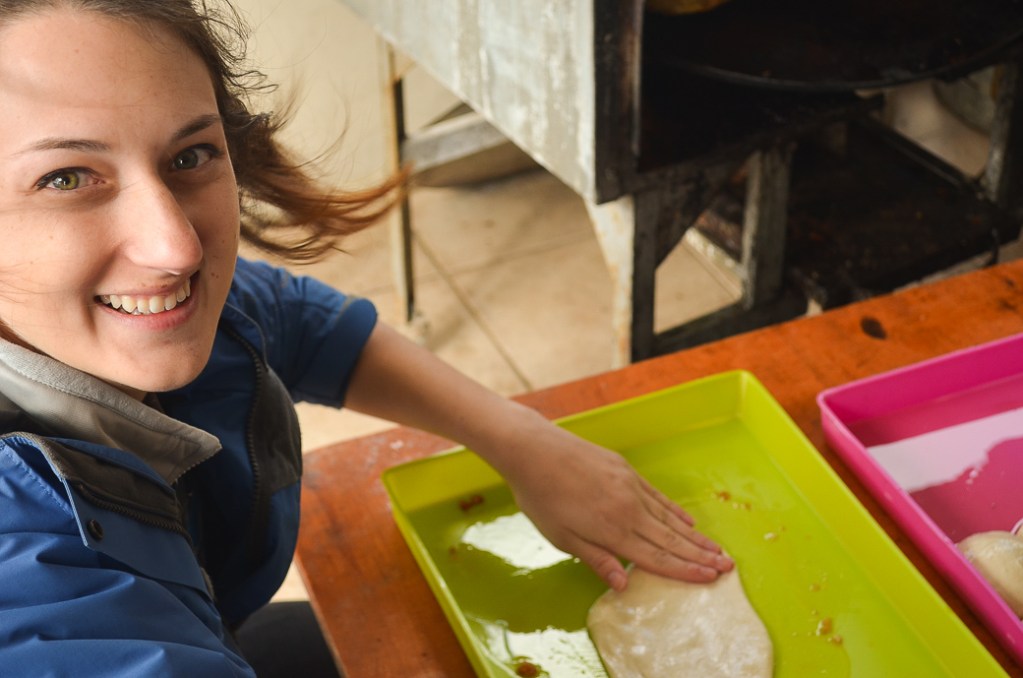
The dough was prepared ahead of time due to rising time. Most pita recipes include wheat flour, salt, a little bit of sugar, yeast and water. Once handed a ball of the dough we each shaped the pita with our fingers into a large mass the size of a salad plate. We then got the choice to top the pita either with za'atar (a spice blend of thyme and sesame seeds) or roasted tomatoes. The woman manning the fire placed the dough on a plate in the oven which spins. After a few minutes in the oven the pita comes out beautifully charred and puffed.
And don't get me started on the taste of pita straight from the oven. Once you try it you'll never go back to store-bought.
3. Malabi
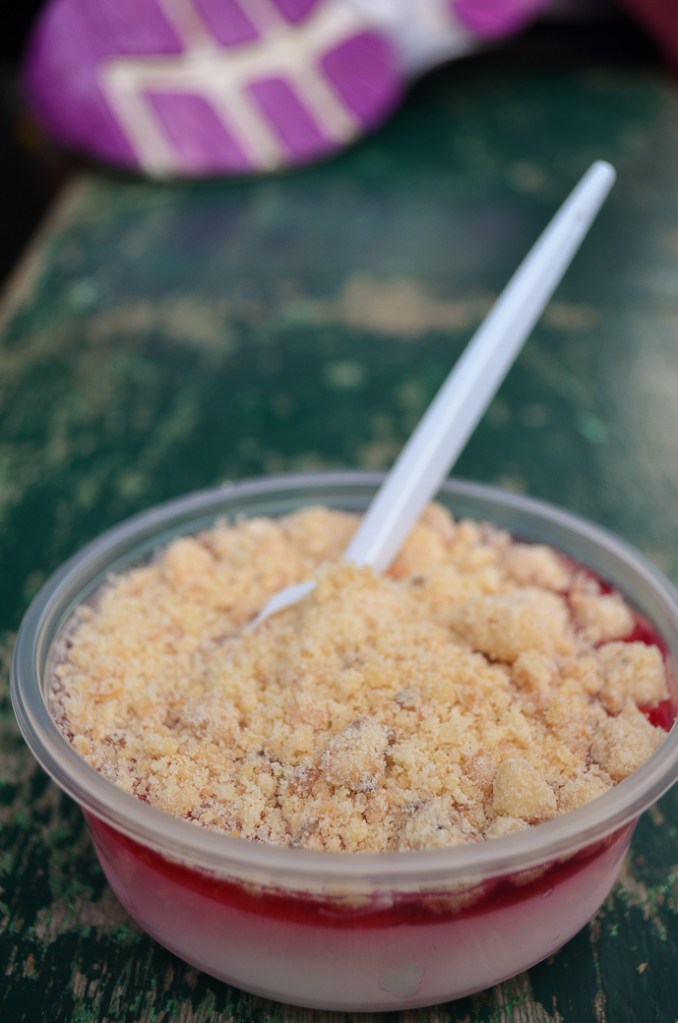
If you find your way over to Jaffa, a city right next to the sea, you've got to stop and try some Malabi. This milk-based pudding is most similar to the Italian panna cotta in regards to texture. A mixture of milk, cornstarch, sugar and vanilla are combined in a pot over a stove and cooked until thick. Once the mixture is stiff, it is poured into individual serving dishes and chilled for a few hours.
Before serving the pudding is doused in a sugar syrup of rose petals and sometimes pomegranate. You can top the pudding with pistachios, almonds or even cookie crumbles.
4. Falafel
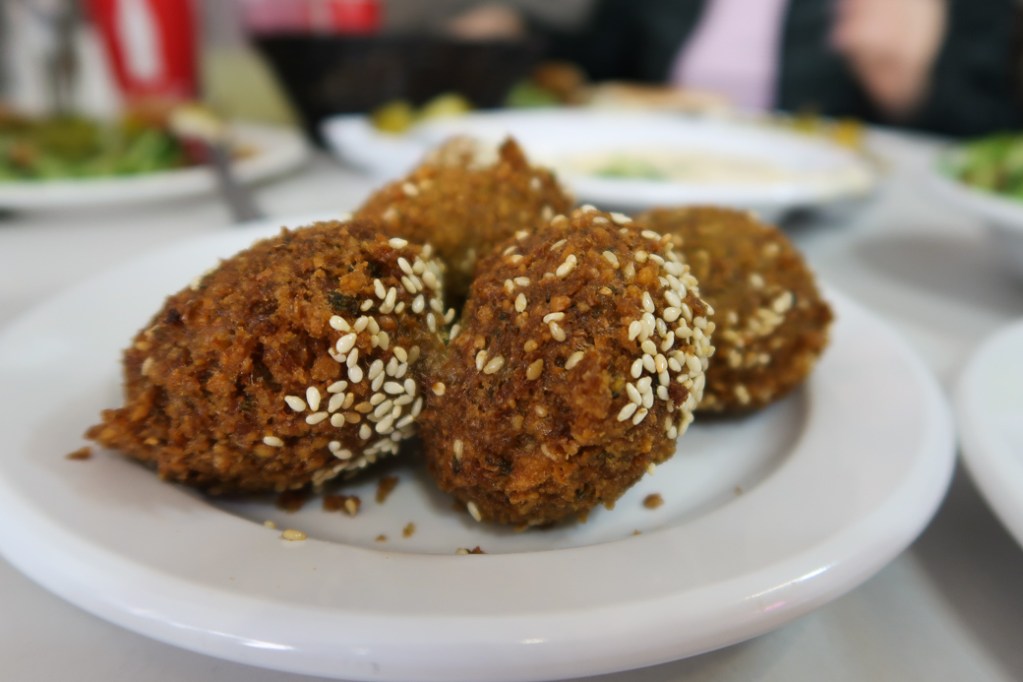
Ah, the falafel. Jam-packed with chickpeas, parsley, garlic and spices, the falafel is a versatile meal in the Israeli culture. Serve it by itself as a snack, alongside some pickled vegetables as a salad, or even in a pita as a handheld meal. The small balls contain no meat which makes the falafel a great alternative for vegetarians.
Making falafel at home is simple and makes a great addition to any Middle Eastern meal. We recommend making this recipe with dried chickpeas instead of canned. While it may take a bit longer to make (it's only a soak overnight) the results are riveting. The falafel tends to hold together better than when using canned because there is less moisture in the mix.
Serve with a side of hummus and pita.
5. Israeli Salad
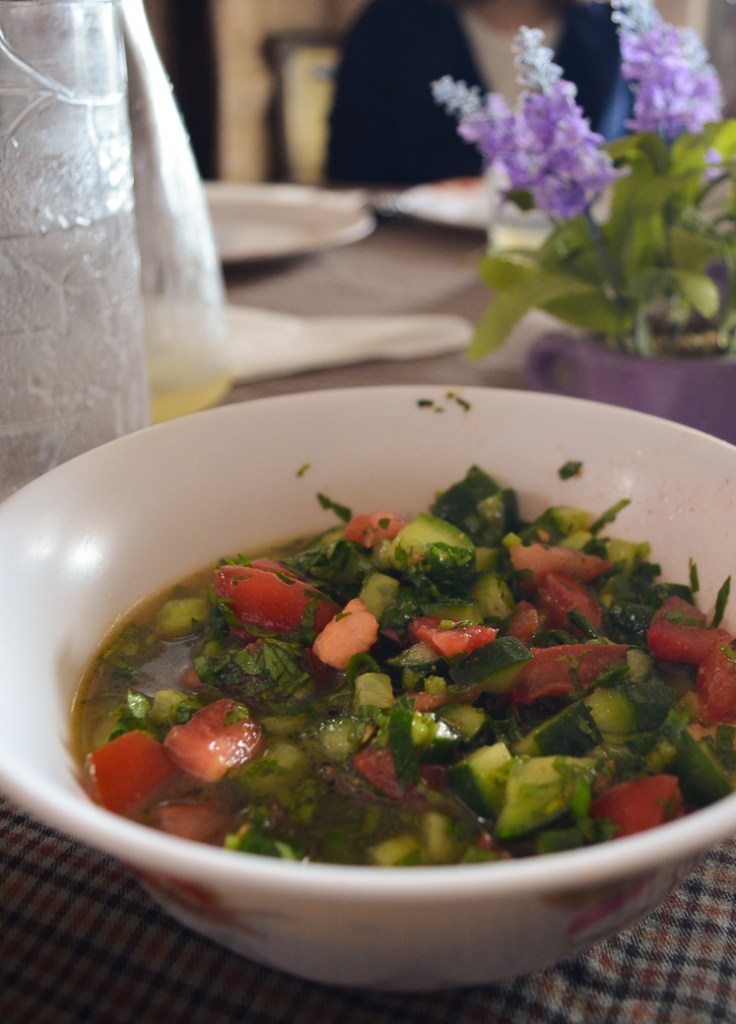
What I was most surprised with (culinary-wise) on my trip was the amount of salads Israelis eat every single day. During our first breakfast in Israel we were served an assortment of different salads along with hummus and pita. Unlike the normal breakfast we are used to in America, this vegetable packed breakfast was something that I started to look forward to towards the end of the trip.
Starting your day with fresh vegetables is not only a guaranteed way to get all your veggies in for the day, but it's actually super energizing. My gut was happy from breakfast and was full until lunch a few hours later. I was energized and didn't feel foggy unlike I usually do after a big meal of waffles or pancakes.
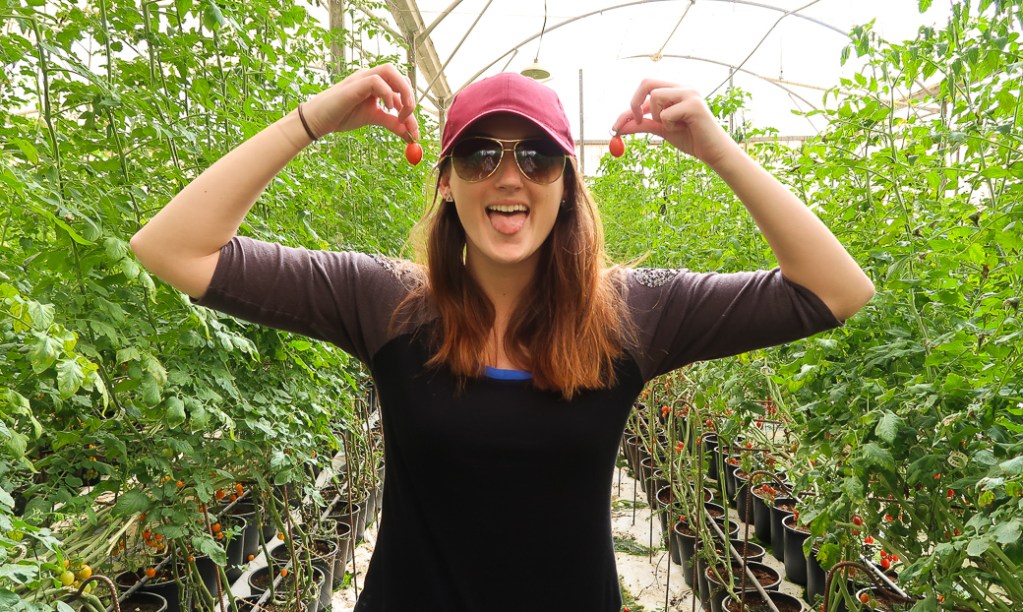
Did you know that they don't call an Israeli salad an Israeli salad? Truth! I mean it would be kinda weird if we called pizza "American pizza." Instead the Israelis call the cucumber, tomato, onion, parsley and olive oil salad, Arabic salad.
6. Halva
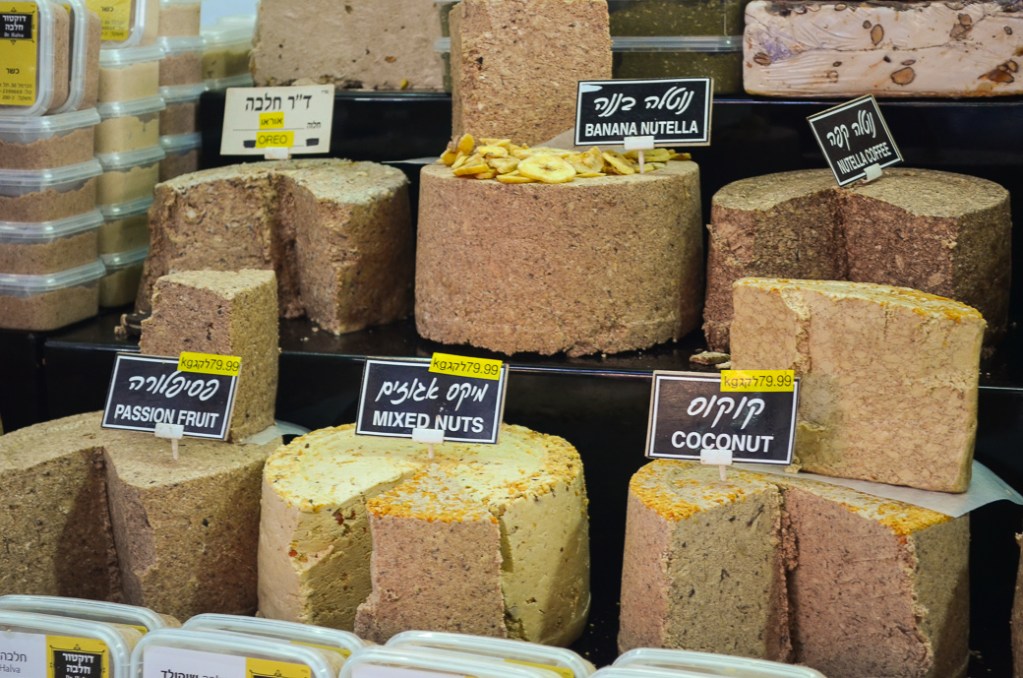
When I first saw big blocks of halva it was in a food market in Akko. Almost fudge-like in appearance, I didn't know what to expect when I was asked if I wanted a taste. Creamy and dry simultaneously, halva is a dessert made from sesame seeds, sugar and flavorings.
The process of making halva begins with the grinding of sesame seeds to form a paste (known as tahini). In a saucepan bring sugar or honey to the soft-ball stage (about 234ºF) and whisk in the tahini. Stir in flavorings such as pistachos, almonds, espresso or even chocolate.
Once the mixture is combined line a tin with parchment paper and pour in the mixture, smoothing out the top. Place it in the fridge overnight or in the freezer for about 3 hours for the dessert to set.
7. Turkish Coffee

Unlike the coffee we are used to in the states which is filtered, Turkish coffee is all about the grounds. Stronger than your average Americano or even shot of espresso, Turkish coffee is prepared using fresh grounds in the same way you would prepare a cup of instant coffee.
Sugar, water and coffee grounds are boiled together then served in small cups. The coffee is meant to sit for a few minutes before consuming to let the coffee ground settle to the bottom of the cup for they are not meant to be drunk.
Once the cup is finished take a look at the bottom. In countries such as Turkey it is very common for fortune tellers to speak about your future through the grounds at the bottom of your glass.
8. Shakshuka
Originating in Northern Africa and various Arab cuisines, the shakshuka is a breakfast (or lunch or dinner) dish you have to try. Similar to the Mexican huevos rancheros, Shakshuka is a dish made from a spiced tomato sauce topped with eggs.While there are many different types of variations, the main dish consists of tomatoes, peppers, garlic, olive oil and poached eggs. Sometimes the eggs are poached hard (meaning the yolks are solid) however I love serving my shakshuka with runny yolks. The yolk tends to run into the spicy tomato sauce and makes it even richer.
9. Bourekas
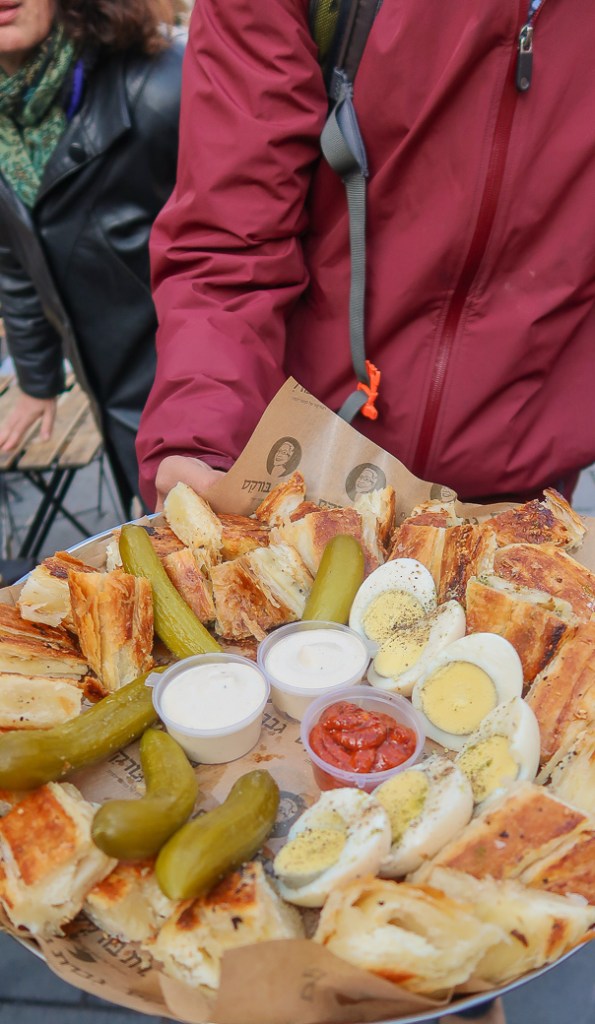
This savory pastry got its start in Israel after Sephardic Jews (Jewish people from Spain and Portugal) made Aliyah back to Israel bringing with them food from their region. One of the foods was the boureka, which now is a very popular snack to grab on the go in Israel.
Made with either puff pastry dough or phyllo, bourekas can be filled with anything from salty cheeses to potatoes. The most popular filling is spinach topped with sesame seeds.
10. Kanafeh
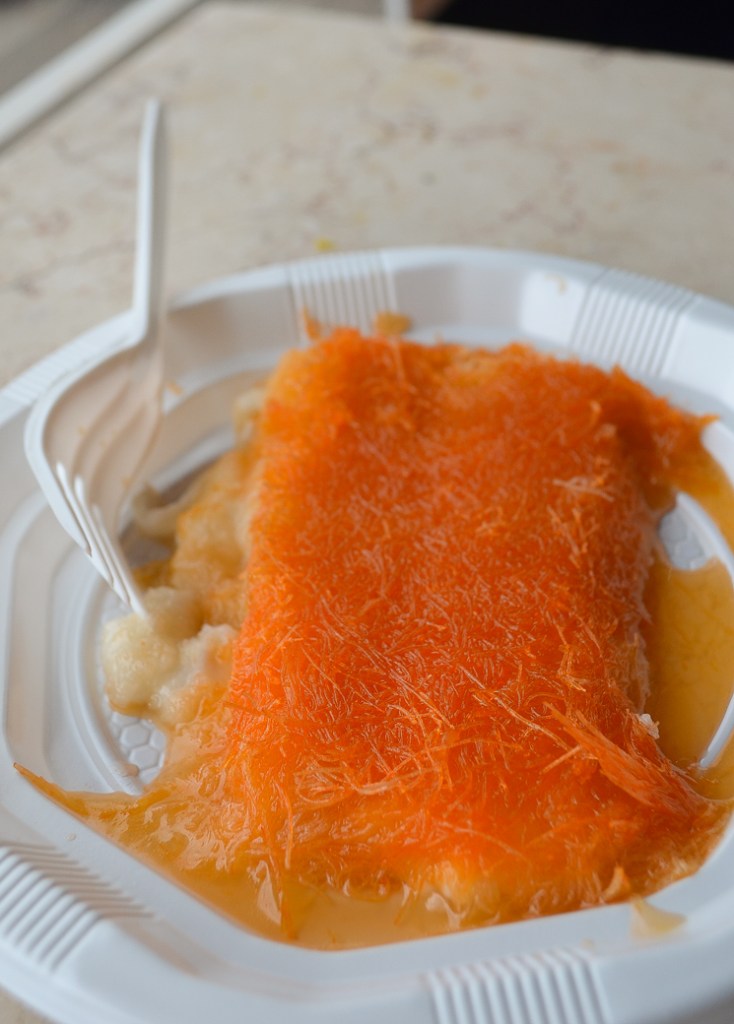
If there's one dessert you have to try in Israel it's kanafeh. Popular in the West Bank, this sweet cheese pastry dessert gets it's unique taste from a cheese known as Nabulsi cheese. A white brined cheese made from goat's milk, Nabulsi can be substituted for mozzarella here in the states for the same result of cheesy goodness.
What makes this recipe even more unique is the shredded phyllo dough. Almost pasta-like the dough can either be ordered online or you can ask your local grocery store if they supply it.
The dessert is topped with a rose petal infused butter which gives the pastry it's characterizstic color. You can enjoy this dessert either hot or cold but I totally recommend eating it straight from the oven to enjoy all that gooey cheese.
